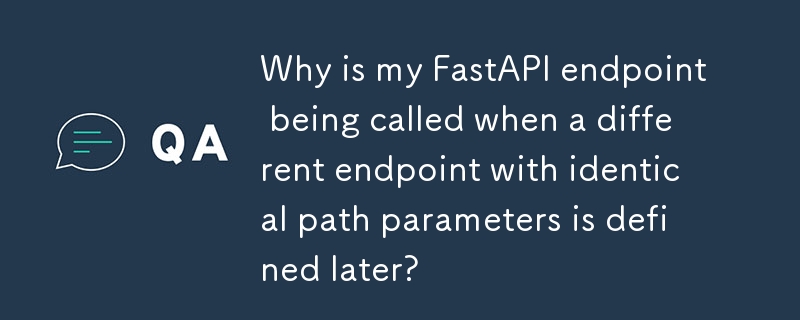

Multiple API Endpoints with Identical Path Parameter
When designing RESTful APIs using FastAPI, it's possible to define multiple endpoints with different paths but a shared path parameter. However, in cases where endpoint execution becomes inconsistent, it's crucial to address potential configuration issues.
Consider the following router file in FastAPI:
1 2 3 4 5 6 7 8 9 10 11 12 13 14 15 16 17 18 19 20 |
|
When invoking API endpoints 2 and 3, unexpectedly, method_one's controller is executed instead of the expected method_two and method_three. This anomaly requires a careful examination of the configuration.
FastAPI evaluates endpoints in the sequence they are defined. Hence, project/{project_id}/{employee_id} will be evaluated first. Subsequently, any request to endpoints 2 and 3 will trigger endpoint 1.
Solution:
To resolve this issue, reorder the endpoint definitions in the router file, ensuring that endpoints 2 and 3 are defined before endpoint 1:
1 2 3 4 5 6 7 8 9 10 11 |
|
By reordering the endpoints, the appropriate controller methods will be executed upon API endpoint invocation.
The above is the detailed content of Why is my FastAPI endpoint being called when a different endpoint with identical path parameters is defined later?. For more information, please follow other related articles on the PHP Chinese website!




